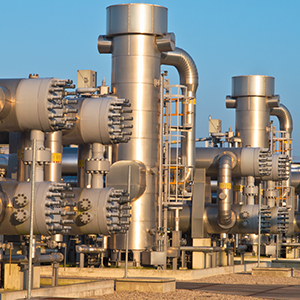Blog
Published: October 03, 2016
Rising U.S. Natural Gas Production
Despite some of the lowest prices in 20 years, U.S. natural gas production has continued to increase. Thanks to the widespread deployment of hydraulic fracturing and horizontal drilling technologies, national output has gained every year since 2006 and is closing in on...

Despite some of the lowest prices in 20 years, U.S. natural gas production has continued to increase. Thanks to the widespread deployment of hydraulic fracturing and horizontal drilling technologies, national output has gained every year since 2006 and is closing in on 80 Bcf/d this year – a 15% rise from 2012 alone. Looking forward, EIA has U.S. gas production increasing to 85 Bcf/d by 2020 and reaching 105 Bcf/d by 2030.
Higher prices will help: the baseload demand markets of power generation, industrial use, and piped and LNG exports are combining to put upward pressure on prices. And we know that increases in demand prompt increases in supply. EIA has gas prices rising to $4.45/MMBtu by 2020 and around $5.15 by 2025. Others are more bullish, predicting prices to reach $4.50 as early as next year, mainly if a cold winter erodes the storage surplus into a shortage. Regardless, the U.S. has a massive low cost resource base at its disposal. IHS reports that 800 Tcf can be produced at a break-even price of $3/MMBtu or less.
Basically all new U.S. gas production will come from shale. Shale gas will steadily extend its share of total output from 50% in 2015 to 60% in 2020 and 70% in 2030. The Northeast plays will remain the driving force. Since 2011, combined production in the Marcellus/Utica areas has surged 13 Bcf/d, accounting for over 90% of the total U.S. growth. The Marcellus, for instance, is now the largest gas field in the world and at 17.8 Bcf/d produces more gas than any nation except Russia or the U.S. as a whole.
Although low prices cut drilling, there are other ways companies can quickly increase output. Rising rig efficiency, for instance, is making the rig count less predictive of future production than before. Even though rig counts are in secular decline, gas output is still mounting thanks to multi-pad drilling, rig mobility, and other rapid evolutions.
For example, since 2012 alone, the Marcellus rig new-well gas production per rig has quadrupled to 12 million cubic feet of natural gas per day. And this year and most of next, many E&P companies plan to finish a large backlog of drilled but uncompleted wells rather than drilling new ones, while also standing ready to up activity at the first signs of a sustained rally in prices. The natural gas inventory of drilled but uncompleted wells is robust, with figures today at nearly 1,000.
One key problem for U.S. shale producers to watch is the lack of infrastructure in the Northeast that has suppressed prices in the region 60-70 cents lower than the Henry Hub benchmark. Companies need a build-out. For example, as the U.S. enacts policies such as the Clean Power Plan that will depend heavily on the increasing availability of natural gas, more pipelines are required to bring gas to market.
The expected 18 Bcf/d of incremental pipeline takeaway capacity out of the Marcellus/Utica coming online over the next few years is critical but faces regulatory hurdles and environmental pushback. Finally, as oil prices increase, it now appears as if OPEC has agreed to reduce output for the first time in eight years, associated gas production will comeback strong as well. Associated gas has accounted for nearly 20% of U.S. gas production and is expected to recover mid-2017 at the latest.
